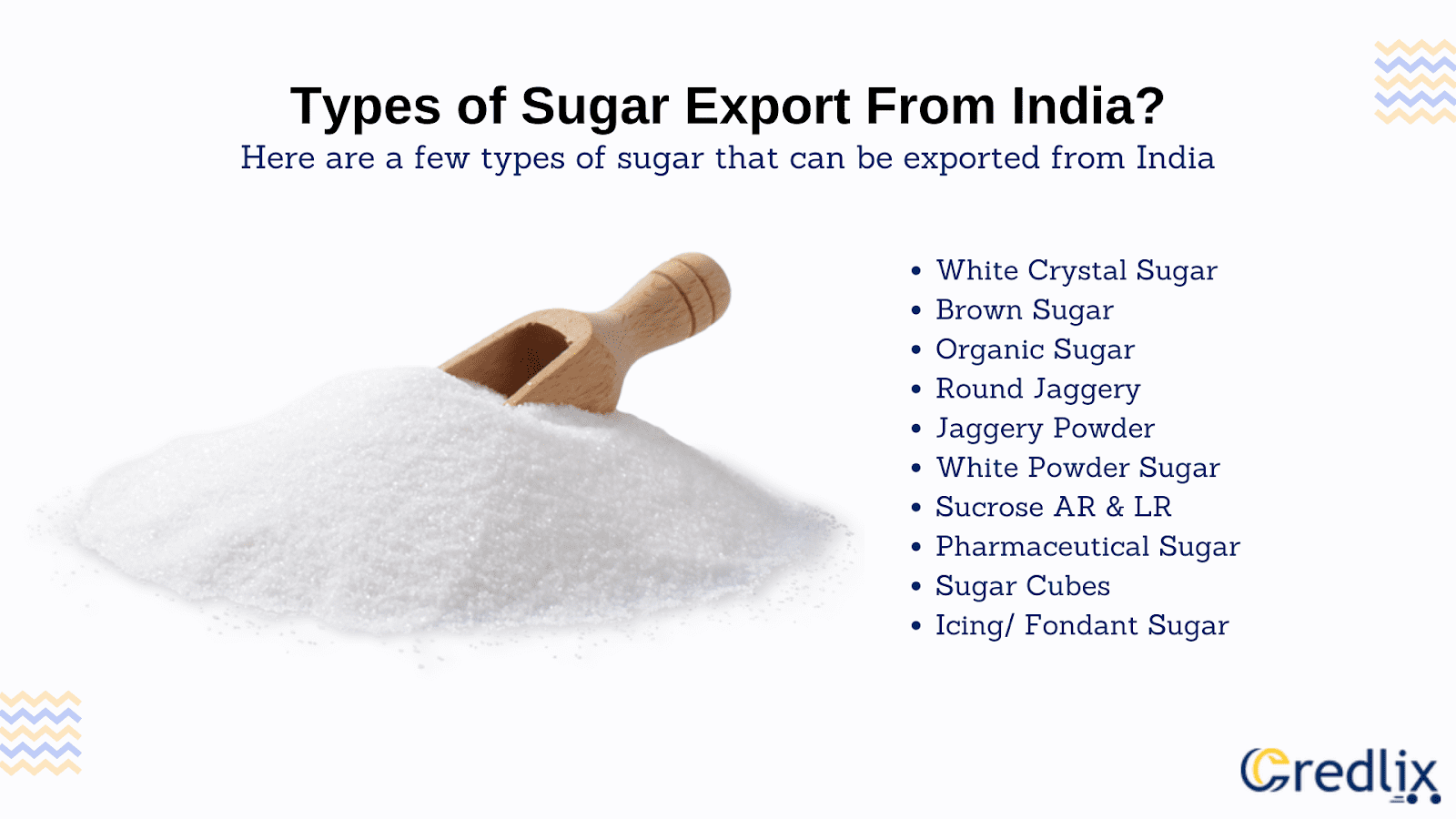
In recent years, Indian sugar has become increasingly popular for export, with a rising global demand. Thanks to new government policies and incentives, there’s significant potential for profitable sugar exports from India. However, there’s a procedure to follow to make this happen successfully.
Firstly, let’s explore the scope of sugar export from India. This involves understanding the market demand, both domestically and internationally. India’s sugar production has been growing steadily, making it a major player in the global sugar market. With favorable climatic conditions and advanced technology, India can produce high-quality sugar at competitive prices.
Moreover, the government has been introducing supportive policies and incentives to boost sugar exports. These include subsidies, financial assistance, and trade agreements with other countries. Understanding these policies and incentives is crucial for exporters to take advantage of the opportunities available.
The scope for sugar export from India is promising, thanks to increasing global demand and supportive government measures. By understanding the market dynamics and government policies, exporters can tap into this potential and establish successful sugar export ventures.
The Scope of Sugar Export from India
The scope of sugar export from India is substantial, considering its significant volume and the country’s status as the largest producer of sugar globally. The domestic sugar market serves as a significant growth driver for the global sugar trade, with Indian sugar being in constant demand worldwide. This demand stems not only from the sheer volume of production but also from the quality and competitiveness of Indian sugar in the international market.
Sugar holds a pivotal position as a cash crop in India, contributing significantly to the agricultural economy and acting as a profitable commodity for both import and export. The entire supply chain, from sugarcane cultivation to the production of refined sugar, is carefully regulated and overseen by the government to ensure efficiency and quality standards.
India’s sugar industry ranks second only to the cotton textile industry in terms of its importance to the national economy. Approximately 7 percent of the rural population in India are engaged in sugarcane farming, forming the backbone of the industry. Additionally, a considerable number of people are employed in secondary activities related to sugar production, such as processing, transportation, and trade.
The government plays a crucial role in supporting and regulating the sugar industry through various policies and interventions. These include measures to ensure fair pricing for sugarcane farmers, subsidies for sugar production, and export incentives to promote overseas trade. Furthermore, India’s participation in global trade agreements and alliances facilitates the export of sugar to different countries, expanding market opportunities for Indian producers.
Overall, the scope of sugar export from India is vast, driven by its large-scale production, quality standards, and supportive government policies. With a significant portion of the population involved in sugarcane farming and related activities, the sugar industry continues to play a vital role in India’s agricultural and economic landscape.
Types of Sugar Export From India?

Here are a few types of sugar that can be exported from India:
- White Crystal Sugar
- Brown Sugar
- Organic Sugar
- Round Jaggery
- Jaggery Powder
- White Powder Sugar
- Sucrose AR & LR
- Pharmaceutical Sugar
- Sugar Cubes
- Icing/ Fondant Sugar
The Sugar Export Landscape of India
Sugar export from India is greatly influenced by the production capacity of its major states, which contribute significantly to the country’s overall output. These states, known for their robust sugarcane cultivation and sugar processing infrastructure, play a pivotal role in meeting both domestic demand and international export requirements. Among the top nine sugar-producing states in India, including Punjab, Uttar Pradesh, Maharashtra, Andhra Pradesh, Bihar, Gujarat, Haryana, Karnataka, and Tamil Nadu, approximately 12 percent of the rural population is directly or indirectly employed by the sugar industry. These states not only boast large-scale sugarcane cultivation but also have well-established sugar mills and refineries, ensuring efficient production and supply chains.
Moreover, India’s sugar export market is buoyed by strong demand from various countries around the world. Leading importers of Indian sugar include China, Russia, UAE, USA, Iraq, Saudi Arabia, and Indonesia. These countries rely on Indian sugar to meet their domestic consumption needs, drawn by its quality, competitive pricing, and reliability of supply. India’s strategic geographical location and efficient trade infrastructure further facilitate the export of sugar to these destinations, making it a preferred choice in the global market.
Overall, the combined efforts of major sugar-producing states and the consistent demand from key importing countries position India as a significant player in the international sugar trade. The synergy between production hubs and export destinations underscores the vital role that Indian sugar plays in meeting global demand and sustaining the growth of the sugar industry both domestically and internationally.
Sugar Export From India Process
To export sugar from India, several important procedures must be followed to ensure compliance with regulatory requirements and facilitate smooth transactions. These steps are essential for maintaining quality standards, meeting legal obligations, and securing transactions with overseas buyers.
Harmonized Tariff Schedule (HTS) Code: Before exporting sugar or sugar confectionery products, it’s necessary to determine the appropriate HTS code. This code categorizes products for customs and trade purposes, facilitating the identification of specific goods in international trade transactions.
FSSAI Registration: The Food Safety and Standards Authority of India (FSSAI) registration is mandatory for exporting any food product, including sugar. This registration ensures compliance with food safety regulations and verifies important details such as the brand name, commodity name, net quantity, and labeling requirements.
APEDA Registration: The Agricultural and Processed Food Products Export Development Authority (APEDA) registration is required for all sugar export products. This registration verifies important details related to quantity, value, product name, and ensures compliance with export regulations and quality standards.
DGFT License: The Directorate General of Foreign Trade (DGFT) issues Importer-Exporter Code (IEC) through an online platform. Exporters must register their products and quantities on this platform, which also facilitates compliance with GST and tax regulations, streamlining the export process.
Export Release Orders (ERO): Exporters of sugar products need to obtain Export Release Orders to ship goods to other countries, especially for food security purposes. These orders serve as official authorization for exporting specific quantities of sugar and ensure compliance with international trade regulations.
Letter of Credit (LC): Exporters often require a Letter of Credit from overseas buyers as a confirmation of their intent to purchase the products. This document outlines payment terms, acceptance of products, and other important details, providing assurance to exporters and facilitating secure transactions.
Quality Checks from Importing Countries: Many importing countries have their own quality standards and regulations for imported food products, including sugar. Exporters may need to undergo quality checks or inspections by authorities in the importing countries to ensure compliance with their set parameters and facilitate smooth clearance at customs.
By adhering to these procedures and requirements, exporters can navigate the complexities of international trade and ensure the successful export of sugar products from India while maintaining compliance with regulatory standards and meeting the expectations of overseas buyers.
Documents You Need For Sugar Export From India (H2)
- IEC
- Details of your registered firm or brand
- ERO (Export Release Order)
- Export invoice
- Registration from APEDA
- Certificate of Origin
- Letter of Credit
- PAN & GST details of your products
- Custom Clearance Certificate
- Authorization from Importing Country
- Narcotics Certification
- Container Type
- Other details of your company, partners, proprietors, heads, etc.
Things to Keep in Mind While Starting Sugar Export from India in 2024
Starting sugar export from India in 2024 requires careful planning, compliance with regulations, and awareness of market dynamics. Here are key considerations to keep in mind:
Market Analysis: Conduct thorough market research to understand global demand, pricing trends, and competition in the sugar export market. Identify target markets based on demand, trade agreements, and import regulations.
Quality Standards: Ensure compliance with international quality standards and regulations for sugar export. Obtain necessary certifications such as FSSAI, APEDA, and any specific quality certifications required by importing countries.
Production Capacity: Assess the production capacity of sugar mills and refineries to meet export demand. Coordinate with suppliers to ensure a consistent supply of high-quality sugar for export.
Logistics and Infrastructure: Evaluate transportation, storage, and logistics infrastructure to facilitate smooth export operations. Arrange for efficient shipping, handling, and storage of sugar products to maintain quality during transit.
Documentation and Licensing: Familiarize yourself with export documentation requirements, including HTS codes, FSSAI registration, APEDA registration, DGFT licensing, and Export Release Orders. Ensure all necessary permits and licenses are obtained before starting export operations.
Financial Planning: Develop a robust financial plan considering export costs, pricing strategy, currency exchange rates, and payment terms. Explore financing options, export incentives, and trade finance facilities to support export activities.
Risk Management: Identify and mitigate potential risks associated with sugar export, including market volatility, regulatory changes, transportation delays, and currency fluctuations. Implement risk management strategies to protect against unforeseen challenges.
Market Entry Strategy: Develop a comprehensive market entry strategy tailored to target markets, distribution channels, and customer preferences. Consider partnering with experienced agents, distributors, or trading companies to navigate foreign markets effectively.
Sustainability and Social Responsibility: Emphasize sustainability practices and social responsibility initiatives in sugar production and export. Highlight eco-friendly production methods, fair labor practices, and community engagement efforts to enhance the brand image and market acceptance.
Compliance and Ethics: Ensure compliance with ethical standards, anti-corruption laws, and trade regulations in all export activities. Uphold integrity, transparency, and ethical business practices to build trust with customers and stakeholders.
By considering these factors and implementing a strategic approach, aspiring sugar exporters can establish a successful export venture from India in 2024, capitalize on market opportunities, and contribute to the growth of the global sugar trade.
Final Note
Embarking on a successful sugar export venture from India in 2024 requires thorough planning, adherence to regulations, and a keen understanding of market dynamics. By conducting comprehensive market research, ensuring compliance with quality standards, and strategizing for logistics and documentation, exporters can navigate the complexities of international trade.
Additionally, prioritizing sustainability, ethical practices, and risk management enhances the brand’s reputation and market acceptance. With careful consideration of these factors and a proactive approach to overcoming challenges, aspiring sugar exporters can capitalize on the opportunities presented by India’s burgeoning sugar industry and contribute to the global sugar trade.


















